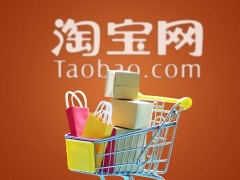Is the transaction volume of 1688 real?
说实话,成交记录难免都会存在些水分,淘宝上的成交记录水分更大。呵呵,其实这都是买家和买方逼出来的,好像普通人都有从众的心态,即使是质量很好的商品,很多买家一看没有成交记录,自己都不愿意做第一个吃螃蟹的人。换个方向,质量很一般的东西,找朋友或客户帮忙买一些上上销量,后面跟着来的也就有了。
所以说成交记录可以作为购买东西的参考数据,而不是决定性数据。其它可以参考的还有诚信通、支付宝、商品评分等等。还是不放心的话可以少量进些样品,先看过实物后再大量下单。
Professional answer
To be honest, there will inevitably be some water in the transaction records, and the transaction records on Taobao are even more watery. Haha, in fact, this is all forced by the buyers and sellers. It seems that ordinary people have a herd mentality. Even if it is a product of good quality, many buyers are unwilling to be the first to try it when they see that there is no transaction record. In other words, for things of very average quality, ask friends or customers to help buy some high-volume sales, and then there will be more to come.
So the transaction record can be used as a reference data for purchasing things, but not as a decisive data. Other references include Honesty Pass, Alipay, product ratings, etc. If you are still not sure, you can buy a small amount of samples, see the real thing first, and then place a large order.
It is real.
The transaction data for 30 days is based on the number of items purchased by buyers within 30 days before the current day.
For example, if today is April 1st, then the sales volume within 30 days is the number of items purchased by buyers from March 1st to April 1st. As long as the purchase and payment are made, it will be counted, regardless of whether the transaction is successful.
For a product link, the number of transactions within a certain period of time is the same as the sales volume. The sales volume is calculated based on the number of items sold, not the number of buyers.
Similar Q&A
recommend What is the name of Alibaba's artificial intelligence?
E-c News Continuously pushing e-commerce knowledge to you








Latest Q&A More
-
Do I need a trademark to open a franchise store on Pinduoduo to sell books?
#Pinduoduo#
-
How to withdraw from a Pinduoduo store
#Pinduoduo#
-
How to withdraw from Pinduoduo merchants
#Pinduoduo#
-
How to pay fees when closing a Pinduoduo store
#Pinduoduo#
-
How to withdraw from Pinduoduo
#Pinduoduo#
-
Which store on Pinduoduo is authentic?
#Pinduoduo#
-
Which stores on Pinduoduo can buy genuine products?
#Pinduoduo#
-
How to check the store under Pinduoduo
#Pinduoduo#
-
How to receive Pinduoduo online game products
#Pinduoduo#
-
How to sell the electronic version on Pinduoduo
#Pinduoduo#
E-c News 2025-12-25 12:25:37

- African netizens use China Africa cross-border e-commerce platform for online shopping
- how is the new seller of cross-border e-commerce doing?
- how can cross-border e-commerce Amazon sell on Amazon platform without goods?
- Amazon store opening process and cost analysis!
- Amazon plans to expand its pharmacy business on a large scale and will add same day delivery service

